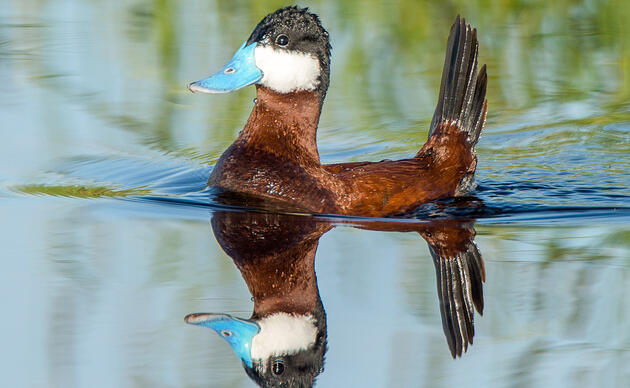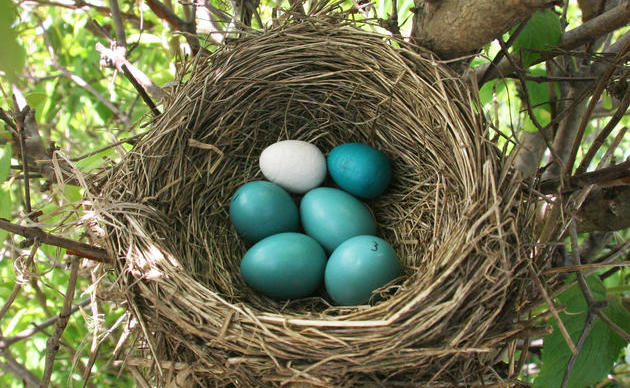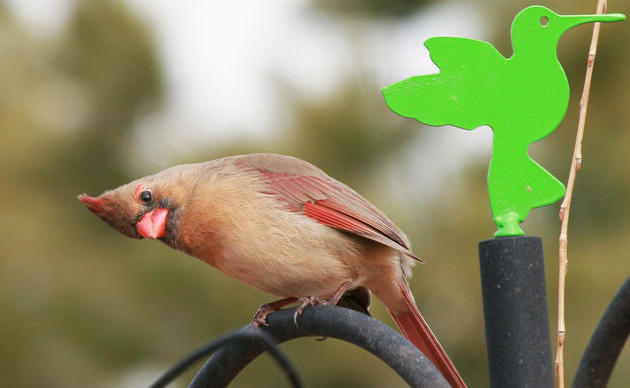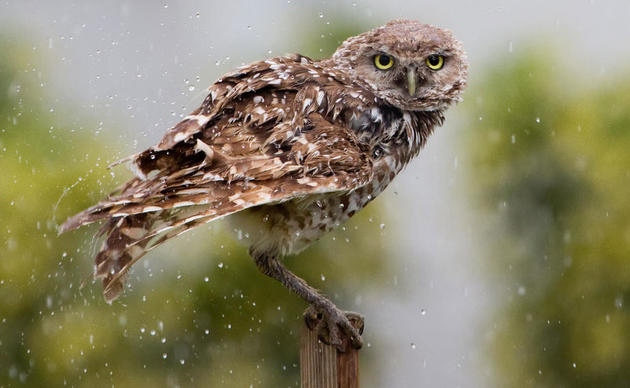Audubon Newsletter: Summer 2018
Letter from Executive Director Greg Goldman
Greetings and Happy Summer!
These are exciting times for Audubon PA, and for our extensive network of committed birders and conservationists, nearly 50,000 strong, and found in every corner of our large, complicated and beautiful Commonwealth.
In the forests of north central Pennsylvania, we are working with forest landowners to protect the places that bird species, such as Scarlet Tanager and Wood Thrush rely on for breeding. Our forests are important to birds up and down the Atlantic Flyway, thus this program is integral to National Audubon Society’s Healthy Forest Program that spans the entire Eastern U.S.
In the Delaware River watershed in Eastern PA, we have a strong web of conservation and education efforts that enhance waterways for key bird species in urban, suburban and rural areas. We are educating the next generation of conservationists through our leadership in the Alliance for Watershed Education, and offer a range of innovative programs for children and adults. We are organizing Audubon members to support sustainable climate policy and fisheries management (intertwined with healthy bird life), and to increase funding for watershed protection that will benefit wildlife and people.
Our partners in all these efforts are the amazing staff at the National Audubon Society. Whether is it fundraising or communications support from our headquarters in New York, or policy and programmatic support from our team in Washington, DC, Audubon PA and National Audubon Society are working together to integrate our efforts for greater impact.
This includes our backing of Audubon’s suit against the US Department of the Interior to protect the Migratory Bird Treaty Act in its 100th anniversary year, and our partnership with the Equity, Diversity and Inclusion team to increase the participation of minority and underserved communities in the conservation movement by tapping into the love of nature that we all share, regardless of our demographic characteristics.
We all know that these are tumultuous times. But, in the words of David Yarnold, Audubon’s CEO, Audubon stands, as it has for more than 100 years, “for America’s core values around life, liberty and the pursuit of happiness…we are inclusive, we’re problem solvers, we honor and protect the web of life in all the work we do.”
True across the country, true here in PA. We work together across 67 counties, for birds, the places they need, and the people who come together to love and protect them.
Native Plants Help Birds Adapt to Climate Change
Many of the songbirds in your backyard are stopping to rest and refuel during their spring and fall migrations. Urban and suburban parks and gardens provide vital food and shelter for birds traveling thousands of miles between their wintering and summer breeding grounds, and are becoming ever more important as climate change threatens the future of hundreds of birds throughout North America.
Iconic Pennsylvania favorites, such as the Scarlet Tanager, Wood Thrush, Ovenbird, and Purple Finch are among those predicted to decline in our state, as shifting habitat becomes less suited to their needs. One way to help all birds adapt to a rapidly changing climate, is to make sure they have the plants that have co-evolved with them. In addition to benefiting birds, these same native plants will also help manage flooding and reduce storm water runoff. They also look beautiful and make our parks more attractive to people and birds.
Here are just a few of the ways Audubon is working to raise awareness and engage people in opportunities to create habitat for birds:
Climate Champions are hard at work advocating for townships to adopt native plant resolutions. Once in place, these resolutions will help guide decisions and best practices on commercial property that will provide environmental and economic benefits for people and birds.
Elmwood Park Zoo Partnership
Audubon Pennsylvania and the Elmwood Park Zoo are collaborating to educate and engage more than 500,000 Zoo visitors by creating a native plant garden at the Zoo’s Birds of Paradise exhibit. The garden will showcase the importance of providing native plants for migratory and resident birds, and will include signage indicating which birds and pollinators are attracted to which native plants. Visitors will be inspired to recreate what they see at the Zoo at home, and to share their stories.
The Central Park Effect Film Screening
More than 100 Audubon friends and members flocked to a screening of The Central Park Effect last month to watch an inspirational film about the birds migrating through Central Park and the birders who eagerly await their arrival. Following the film, we had a lively discussion about the importance of native plants in urban and suburban settings like Central Park, Philadelphia’s Fairmount Park, and in our own backyards. Several community meetings and workshops on how to increase native plants on public and private properties have sprung out of this event.
If you’d like to join our efforts, please contact Val Peckham at vpeckham@audubon.org to be added to our Climate Action list and receive updates and invites to programs and social gatherings with fellow advocates for birds.
Ruffed Grouse Help Lead the Way to Healthier Forests
Ron Rohrbaugh joined Audubon Pennsylvania in late May as our Forest Program Manager to lead our efforts in enhancing forest habitat for birds in Central and Western Pennsylvania. Below is Ron’s reflection of his recent visit to Allegheny National Forest to meet with partners to discuss creating a forest management demonstration site.
“Wait! Stop,” yelled Linda from the backseat. At the same moment, I saw several mottled brown “ping-pong balls” bounce from the left shoulder of the dirt road. Even before the U.S. Forest Service vehicle rolled to a stop, superhero Linda was out and attempting to shoo a momma Ruffed Grouse and her brood of at least six little ones to safety.
Grouse chicks are precocial, meaning that they leave the nest almost immediately after hatching when they are about the size of an adult’s thumb. They are surprisingly mobile and can move up to 1/4 mile per day by the time they are three or four days old. They begin flying around day five and resemble giant bumble bees in flight. In the first 10 days after hatching, the hen may lead her brood up to four miles from the nest to a summer brood range. Chicks grow rapidly, increasing from about 1/2 ounce fuzz balls when hatched to nearly 20-ounce, full-grown birds by 17 weeks of age.
My encounter with the young grouse happened in early June while doing a “windshield tour” of Audubon Pennsylvania’s forest management demonstration area in the Allegheny National Forest with Collin Shepard, who is a Forest Ecologist with the U.S. Forest Service (USFWS), and Linda Ordiway who is a Regional Wildlife Biologist with the Ruffed Grouse Society. The demonstration area is part of an exciting new project that is funded by the National Fish and Wildlife Foundation and Department of Conservation and Natural Resources and includes partners from the USFS, Ruffed Grouse Society, National Wild Turkey Federation, American Forest Foundation, Audubon New York, and the Appalachian Mountains Joint Venture.
The goal of the project is to improve landscape-scale forest health for birds and other wildlife through engaging private landowners, training foresters in bird-friendly practices, and recommending management actions on private and public lands. We work first in demonstration areas that serve as outdoor classrooms for learning and allow us to test and refine management prescriptions. The demonstration areas then provide knowledge and leverage to work statewide.
The Ruffed Grouse we encountered on the Allegheny National Forest is a good example of the importance of our work. Many forest species, like the grouse, Wood Thrush, and Golden-winged Warbler, require forests of multiple ages within a relatively small area to complete their breeding cycles. Many forests in Pennsylvania, however, tend to be even aged after re-growing from forest clearing 80-100 years ago. Our work, which manages forests through strategic timber harvesting, will create healthy, resilient forests with age and structural conditions that better meet the needs of birds and other wildlife.
As Linda returned to the backseat after her heroic grouse rescue, I said, “Nice work, Linda!” With a smile of pride and accomplishment, she said, “that’s my job!” We all laughed, as in the truest sense, it really was Linda’s job to protect Ruffed Grouse! Safeguarding bird populations isn’t always as easy as shepherding youngsters from the road, but our growing, multi-partner initiative ensures that we have capacity to make lasting, landscape-scale changes that improve forest health statewide.
Audubon Launches The Waterthrush Project in Chester and Berks Counties
In conjunction with the Delaware River Watershed Initiative, Audubon Pennsylvania has created a new education and habitat registry program centered around increasing water quality and bird habitat in the Schuylkill Highlands region.
This program focuses on improving bird habitat on properties near or containing creeks, streams, and tributaries. The Louisiana Waterthrush depends on healthy waterways for food and nests on the banks of forested creeks and streams. Waterthrush, is the iconic species for the project and represents the most site-specific and perhaps elusive bird in the watershed. There are many other birds that benefit from stream buffer enhancement including warblers, vireos, and towhees.
This program will educate and inspire property owners to increase their tree canopy coverage to create more shade and cool the streams and reduce runoff, which increase water quality and creates more habitat for birds, especially Louisiana Waterthrush. For more information and how to enroll, visit the Waterthrush page at http://pa.audubon.org
Alliance for Watershed Education Fellowship
Audubon Pennsylvania is happy to welcome four new faces to our team: Amani Reid, Izelliah Nelson, Malcolm Loh, and Alison Kloiber! These four young adults are members of the 2018 cohort of Fellows in the Alliance for Watershed Education (AWE) of the Delaware River, a collaborative effort of 23 environmental education centers in the Delaware River watershed (DE, NJ and PA) and the William Penn Foundation.
A major program of AWE is this watershed fellowship program, which focuses on increasing individuals’ engagement and action toward protecting and restoring the Delaware River watershed. During its first year in 2017, the program hired 23 summer fellows (one per center). The program was so successful that it doubled in 2018. Audubon Pennsylvania is thrilled to have Malcolm and Alison working at the John James Audubon Center at Mill Grove (JJAC), and Izelliah and Amani at the new Discovery Center in Philadelphia.
Izelliah Nelson at the Discovery Center in Philadelphia, explained why she was excited to take the position. “I joined the fellowship because I saw it as an opportunity to engage with my community and introduce them to a “new” way of interacting with the environment around them. My passion is community engagement, organization and public policy activism. This fellowship serves as an opportunity for me to learn more about environmental conservation and sustainability which, I believe will be our biggest concern for the future as citizens of this earth.”
“I wanted an opportunity to actively make a difference by teaching kids the beauty of protecting nature. This experience of understanding how to make a change in my community for the better is what I hoped to gain from this job so when I leave I’ll know how to help people help themselves in making a community a better place to live,” said Malcolm. This summer, Malcolm is working at the John James Audubon Center this summer and will be working with children in Norristown, where he lives.
All four fellows are focusing on reaching new audiences, through innovative programming, deliberate outreach strategies, volunteer opportunities and educational activities. Each fellow chooses a capstone project for the summer, which is an initiative of their own design and implementation that they can take ownership over, and leave their legacy with the center after the fellowship ends. Their capstones will be showcased at a Summit in August in Philadelphia.
Additionally, the fellowship provides leadership and professional development opportunities, including deeper ecological education, resume building, non-profit operations/management, community outreach and job shadowing. An orientation for all the fellows was held in mid-June at the Poconos Environmental Education Center (one of the 23 centers in AWE) which brought all the fellows together for the first time for an intensive 3-day introduction to the Alliance, to the Fellowship and to each other. Motivated and inspired by the orientation, Audubon’s four fellows have started to dive into their work at the Discovery Center and JJAC, and we’re excited to see what great things they accomplish this summer! For more information, please visit https://www.watershedalliance.org/.
Join Us For The Public Opening Of The Discovery Center
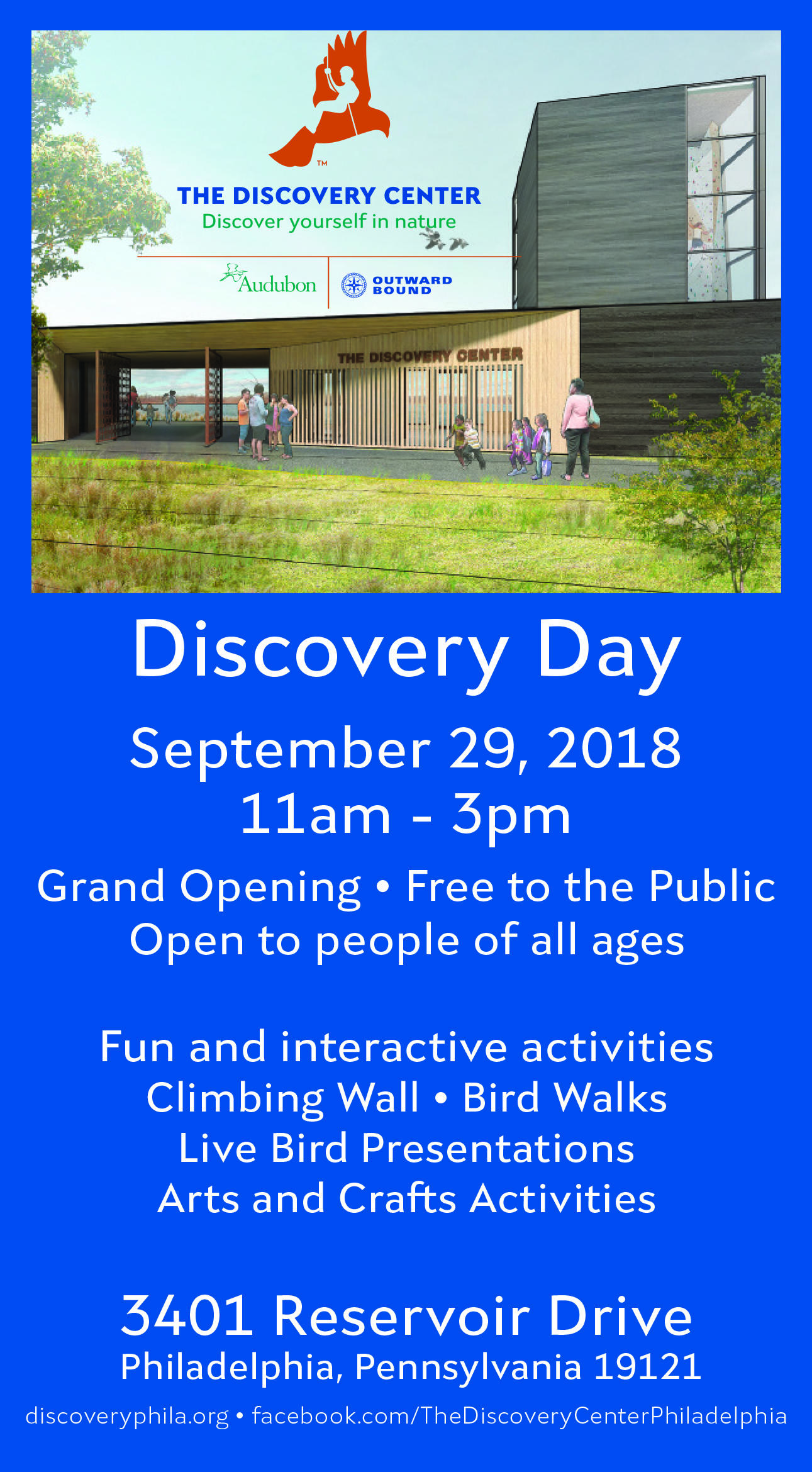
How you can help, right now
Donate to Audubon
Help secure the future for birds at risk from climate change, habitat loss and other threats. Your support will power our science, education, advocacy and on-the-ground conservation efforts.
Become a Monthly Donor
Donating monthly is flexible, easy and convenient and makes you a champion birds can count on, no matter the season.

